After making it to the semi-finals for four consecutive seasons in the Indian Super League, the 2021/22 season was a disappointment to the fans of FC Goa, which more or less is the reason why there are high expectations for Goa to pull off a comeback in the current season. In this tactical analysis piece, we’ll perform an analysis of Goa and understand their tactics for the season.
All visualisations include only players who have played a minimum of 120 minutes and all Goan players will be highlighted in yellow for easy identification.
Team Overview
Goa is one of the teams known for their philosophy and how they stick to their identity. Without any surprise, we can see that the team has stuck to the same formation they’ve been using since day one.
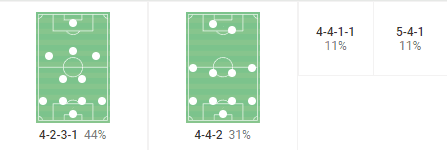
They have opted to play 4-2-3-1 44% of the time, with the second majority being 4-4-2 at 31%. Having played five games so far, the team has managed to win three, lose two, and draw none. They have scored eight goals so far this season and have conceded only five. While the defensive stat is something to be proud of, their ability to score is a concern if the team finish in the top four this season. We’ll analyse the reason behind it in detail later, but for now, we’ll try to get an overall idea of what exactly the team is lacking.
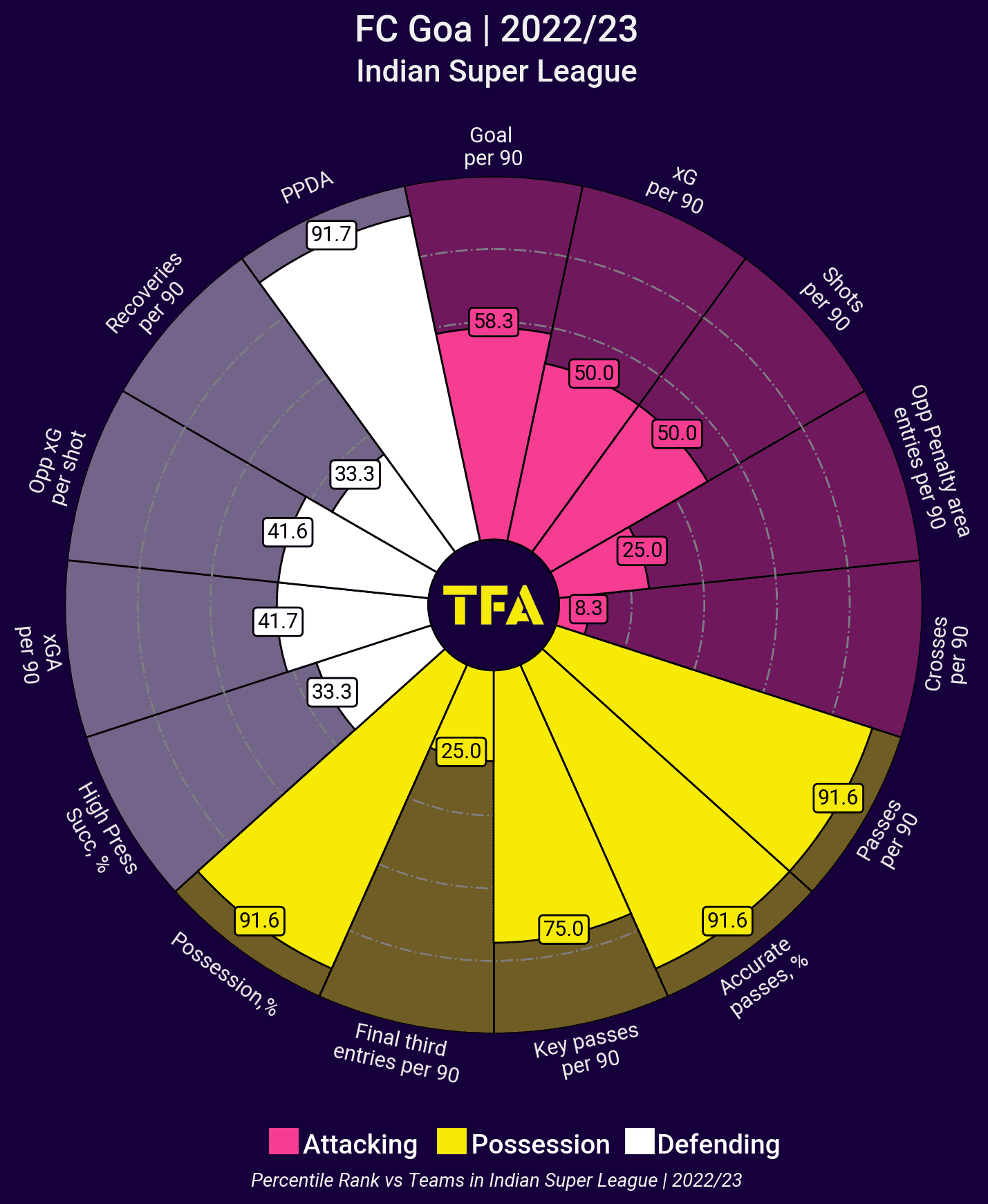
On looking at the pizza chart, it should be quite evident that the final output is what the team is lacking. Despite enjoying so much possession we can see that the team’s final third entries per 90 are at a very low percentile when compared to the other possession metrics which as a result is affecting the attacking metrics.
While metrics like goals per 90, xG per 90 and shots per 90 are at the median, we can see passes to penalty area per 90 is very low indicating that the team is struggling to get the final pass to their attacking. We shall analyse deeper in the upcoming session.
Build-up of play
Goa being a possession-oriented team love to keep the ball to themselves and wait for perfect opportunities to progress the ball. When building up the switch to a formation of 4-1-3-2 with the defensive midfielder slightly pushing up to join the two attacking midfielders. The two defensive midfielders keep switching roles on who drops down to act as a pivot based on the play.
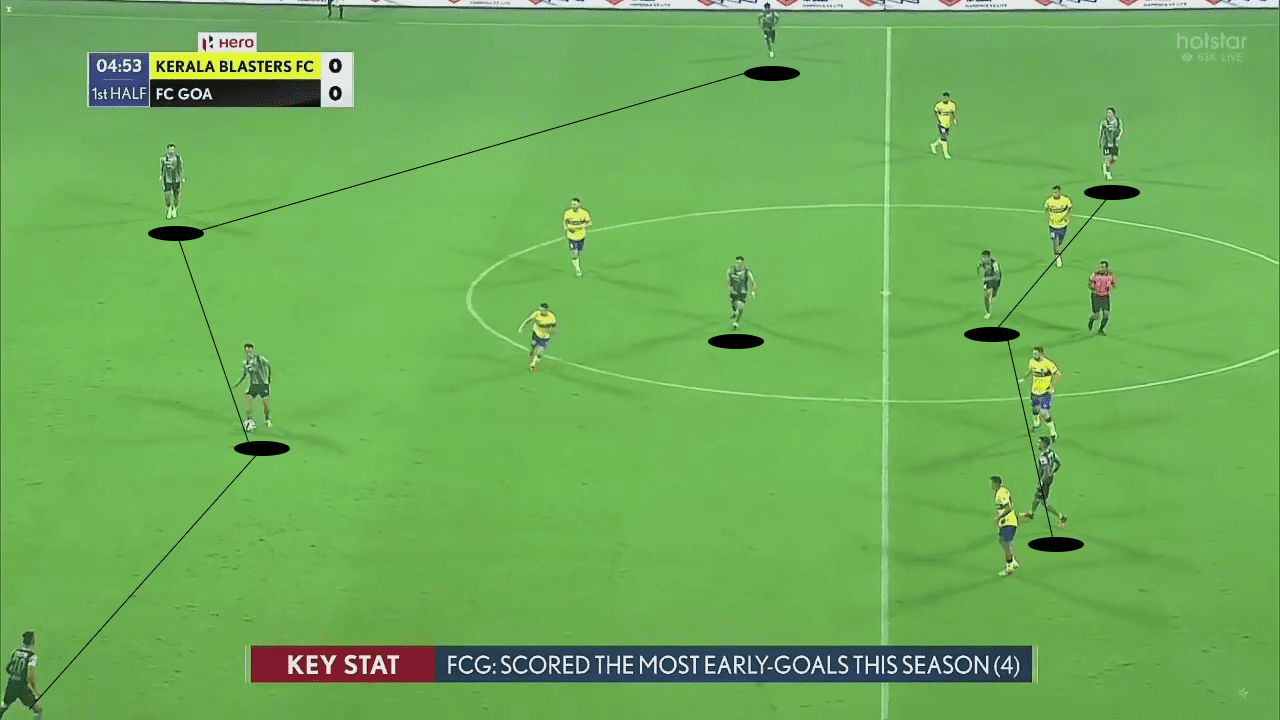
The two attacking midfielders drop low occupying whenever necessary to receive a pass through the channels. An attacking midfielder and striker who combine up the top continue to occupy remaining spaces and wait for an opportunity.
While this is something Goa can do very well with the technical expertise they’ve got among the players, they’ve been struggling to progress against teams who do not leave much space while defending. Against Jamshedpur FC, they were able to find gaps and exploit spaces because Jamshedpur pressed high when off-possession and left huge spaces in their own half for Goa to exploit. But against Hyderabad FC and Kerala Blasters, we saw Goa struggling to progress the ball to the final third.
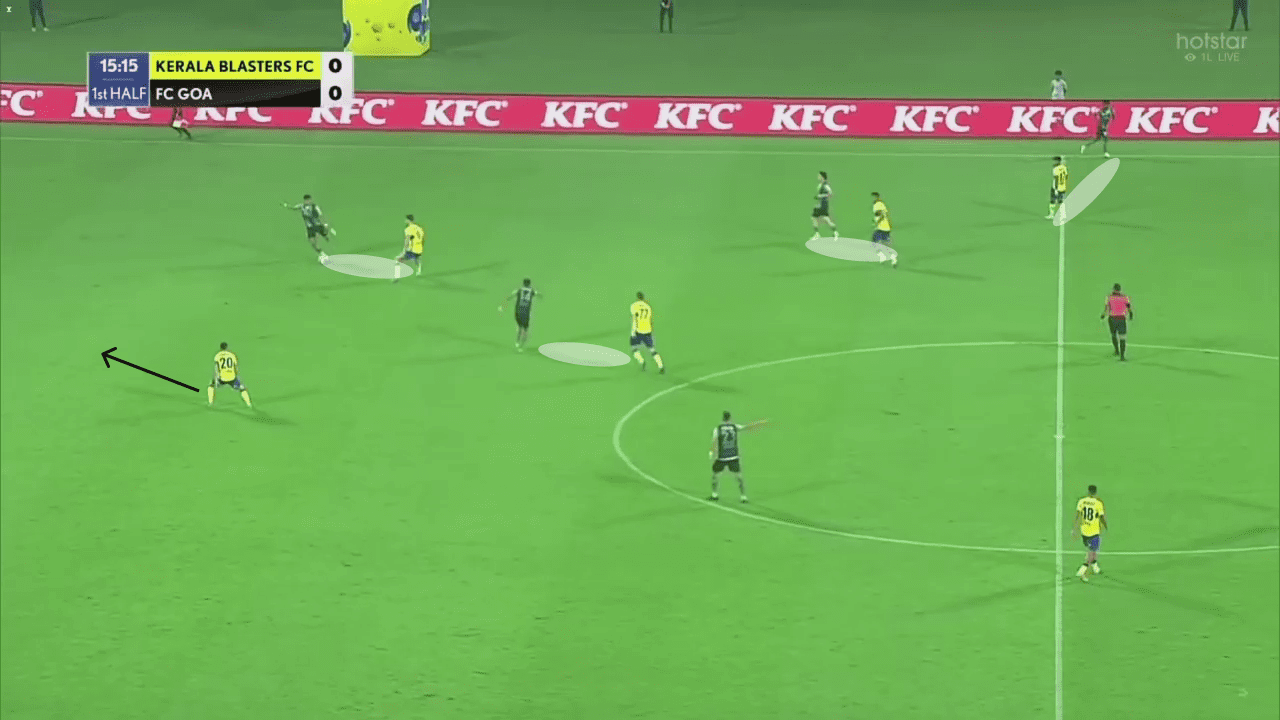
The reason could be the lack of ideas to progress the ball to the final third, when not shown enough space up front, Goa is forced to play back to the keeper. On knowing where Goa struggle, the opponents do not force a press, but rather prefer to stay compact and look to keep the space minimum.
As a result, Goa run out of ideas to progress and end up holding on to possession in their own half which pretty much explains the reason why they have a high percentile in terms of possession. At times like these, the attacking midfielders need to show up as they need to be very decisive with the minimum passes they receive against well-defending opponents.
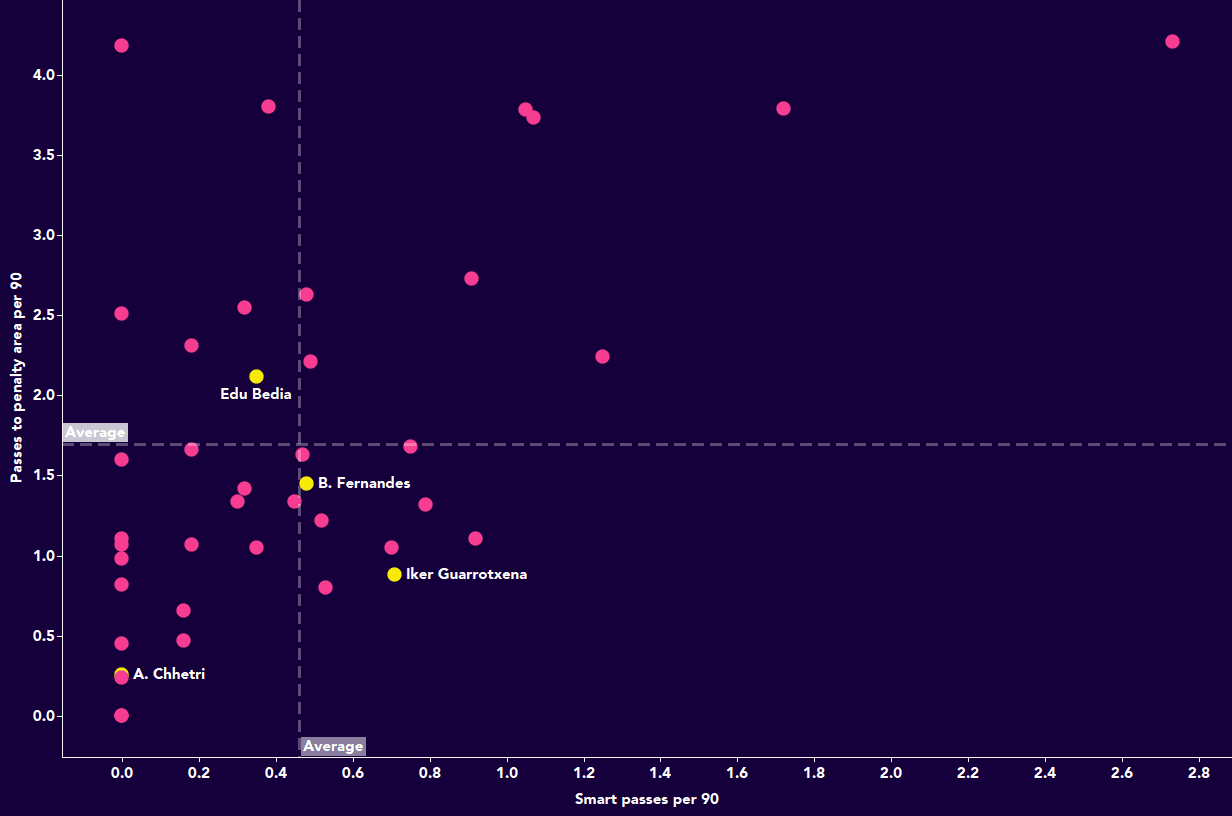
The scatter plot is used to analyse the effectiveness of the passes attempted by the midfielders of Goa. On the x-axis, we have smart passes per 90 and on the y-axis, we have passes to the penalty area per 90. It’s kind of a worry to see Edu Bedia, the team’s defensive midfielder attempting more passes into opponents’ penalty area than the attacking midfielders. While the attacking midfielders manage to attempt above-average smart passes per 90, we could not help but notice they make below-average passes into the penalty area which pretty much highlights the problem faced by Goa in the attacking third.
Is finishing an issue?
Although Goa has been rotating their front four to find a stable combination, Sadaoui has been their best attacker this season with three goals and one assist from five games.
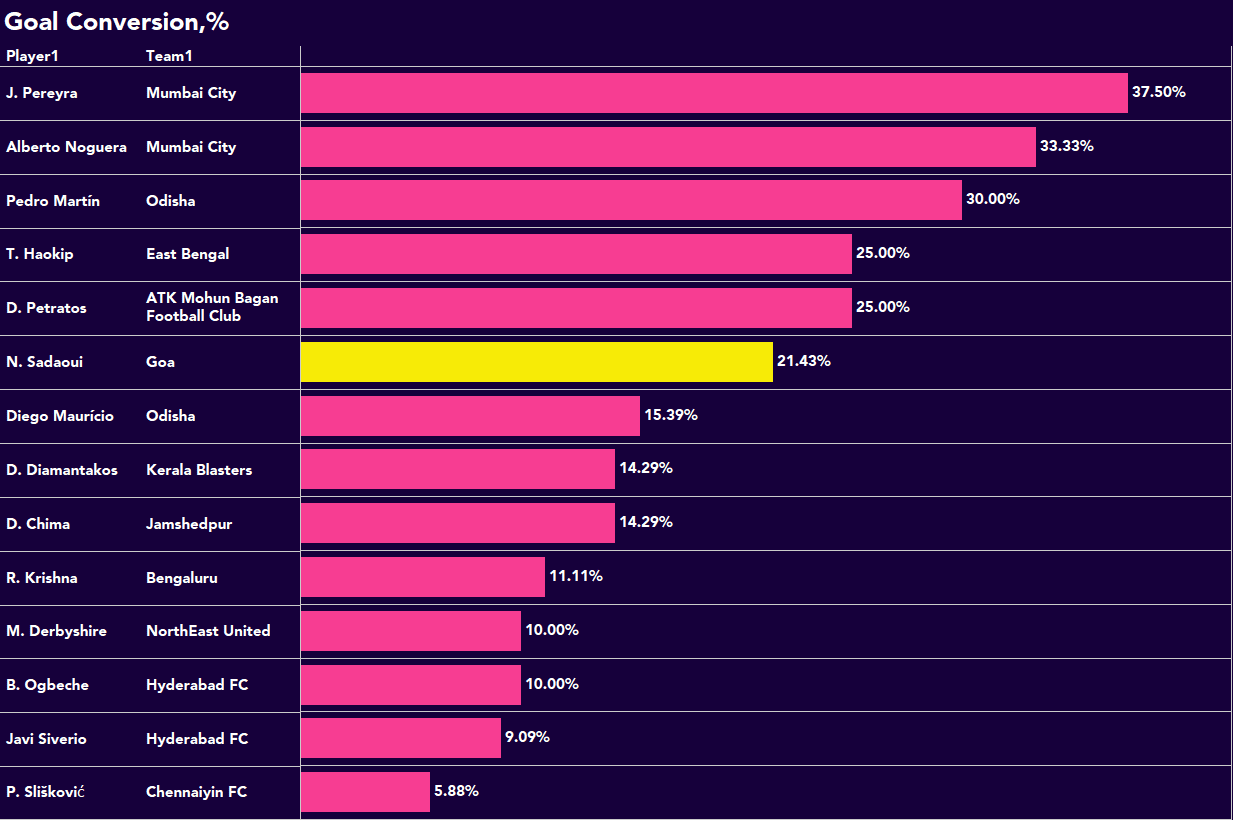
From the bar chart which depicts the goal conversion percentage of the strikers, we can see Sadaoui in the sixth position in the league with 21.43%. With not much difference between the ones above, it would be interesting to see if his conversion rate goes high if provided with more chances upfront which as a result may influence the results of the matches.
A further step to analyse Sadaoui’s finishing abilities would be to find the difference between actual goals scored per 90 and the expected goals per 90.
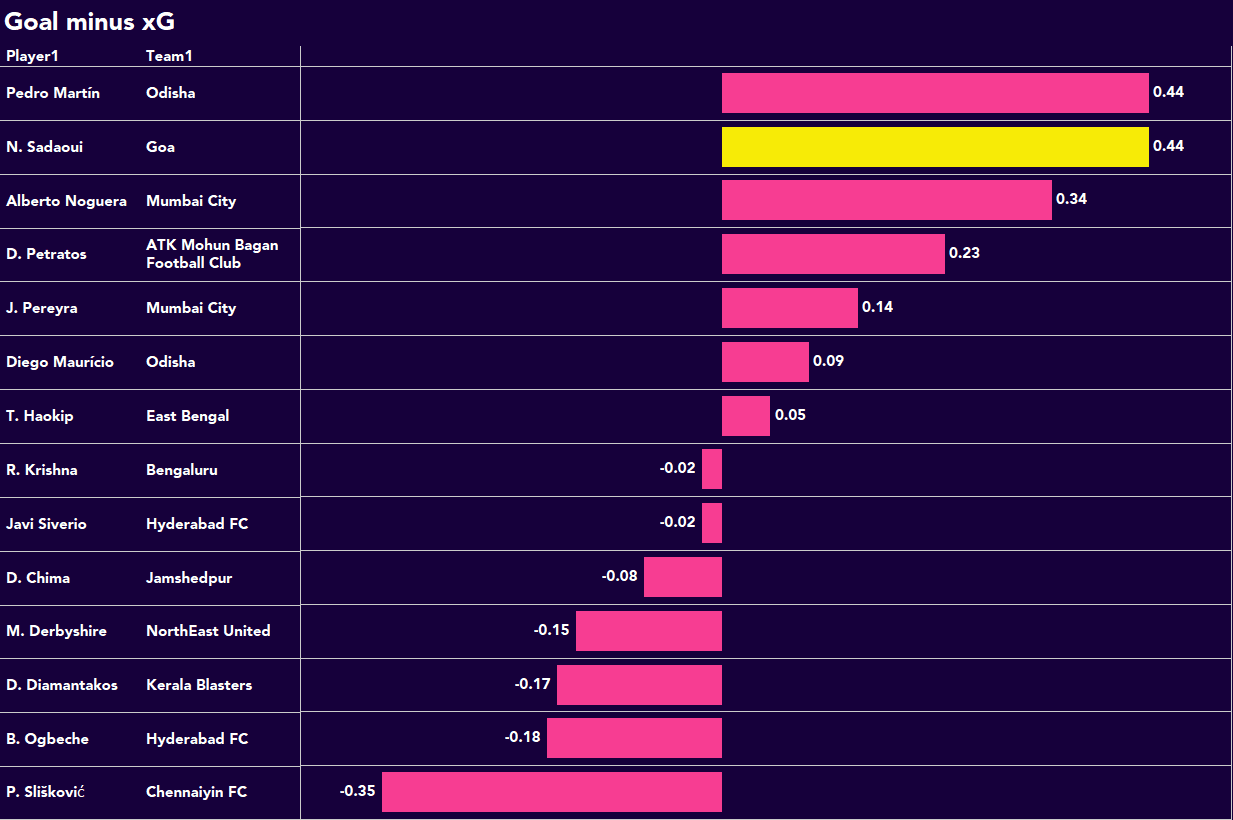
In the bar chart, we can see Sadaoui shares first place with Pedro Martin with a 0.44 difference between goals per 90 and xG per 90. The high positive value indicates how clinical he has been with chances and how good his finishing ability is. To be more precise, he averages an xG per 90 of 0.23 while overperforming it with a goal per 90 value of 0.67.
Off-Possession
When they lose possession, Goa first and foremost tries to kill the momentum of the opponents. The closest player to the ball receiver rushes and puts pressure on the ball possessor and forces him to slow down the play and pass back. They do not commit to hasty presses, but rather know when to hold the press and when to press hard.
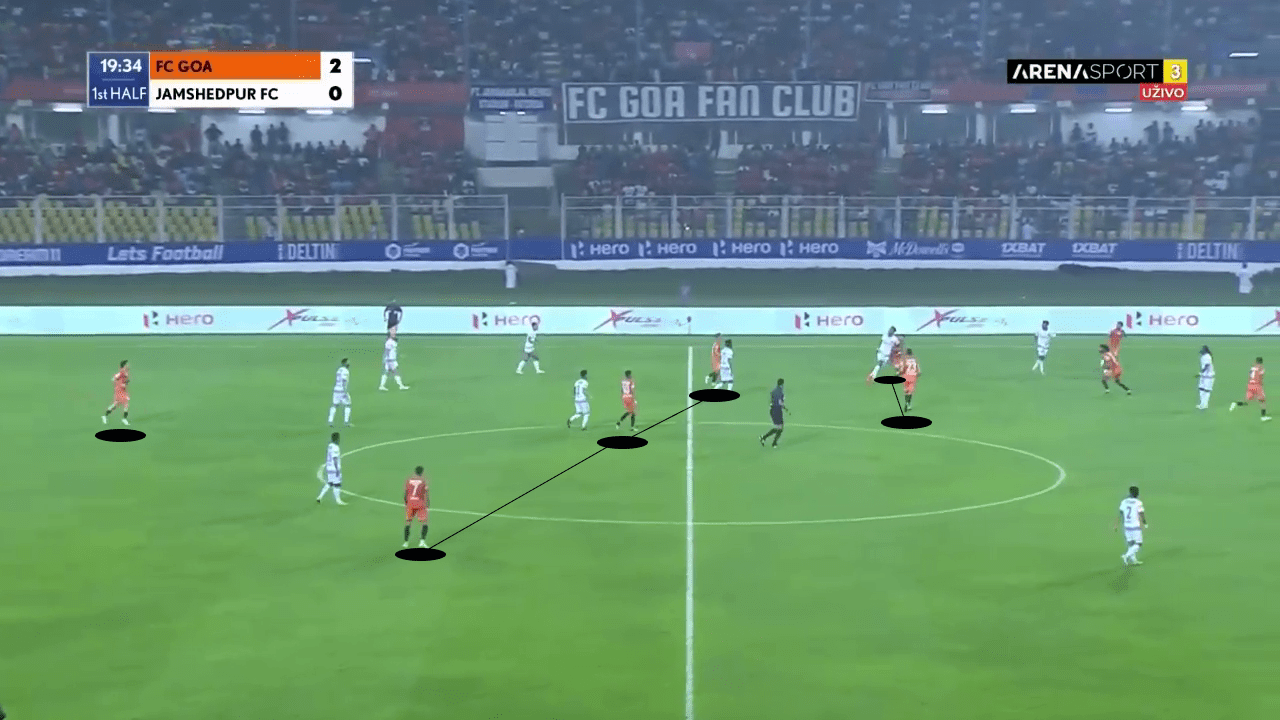
When the opponent build-up, they tend to form a 4-2-3-1 formation with the striker pressing and the remaining attacking midfielders covering the striker and the spaces while the two defensive midfielders look to close down the free man who keeps making runs. The front four are well-synced as they communicate well on who should press and they balance the first line of defence very well.
They become more compact as the game progresses and they form a 4-4-1-1 to prevent the opponents from exploiting the flanks and at the same time they make sure to keep the centre compact.
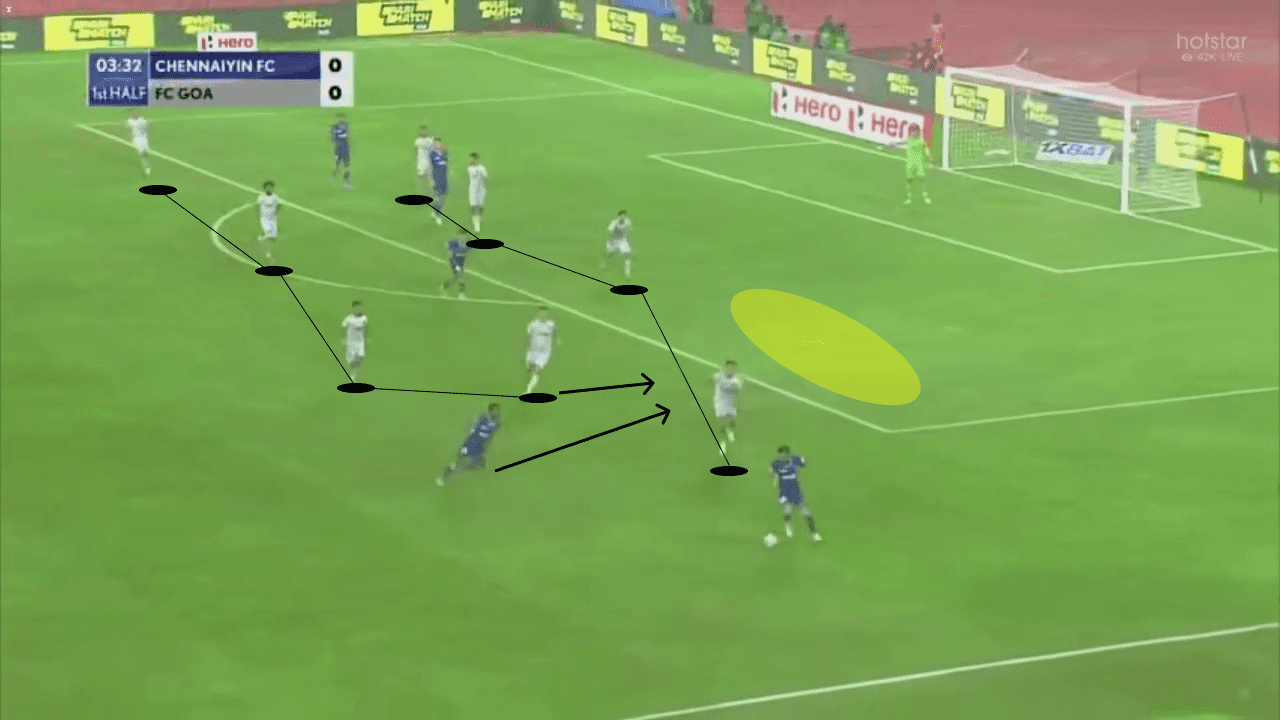
The match still depicts how compact they are in their defending third and we can see that they leave no space in between lines for Chennaiyin FC players to operate. They communicate so well and make sure to cover all the spaces. We can see when the full-back pushes up to press a player, there’s a space created behind and immediately the player from the mid is rushing to fill in the space to maintain balance in their defensive structure.
To analyse how good Goa has been with their defensive duties, we shall look at the following scatter plot.
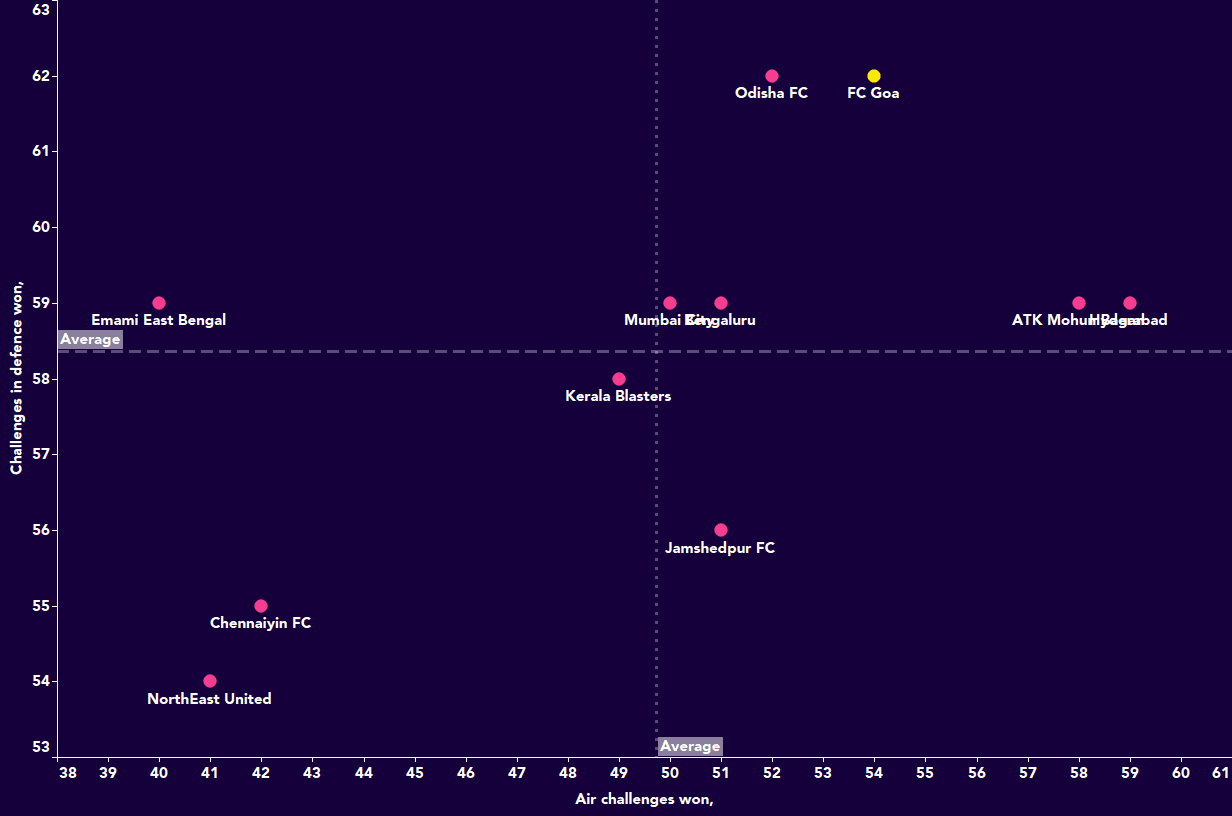
Conclusion
Goa are pretty good defensively, although they struggle and make mistakes at times, they’ve been reliable most number of times. The fact they enjoy high possession could prevent testing the team’s defence to an excessive degree but on the whole, off-possession the team is really good.
The real concern is in their progression to the final third and to create chances. They struggle against teams that leave no space and end up passing behind. With their finishing being good so far, if Goa can create a lot of chances it can potentially help them finish in the top four this season. The existing player should step up or a good winter transfer window should help the team step up. But with so many games left to play, it’ll be interesting to see how Goa shape up this season!

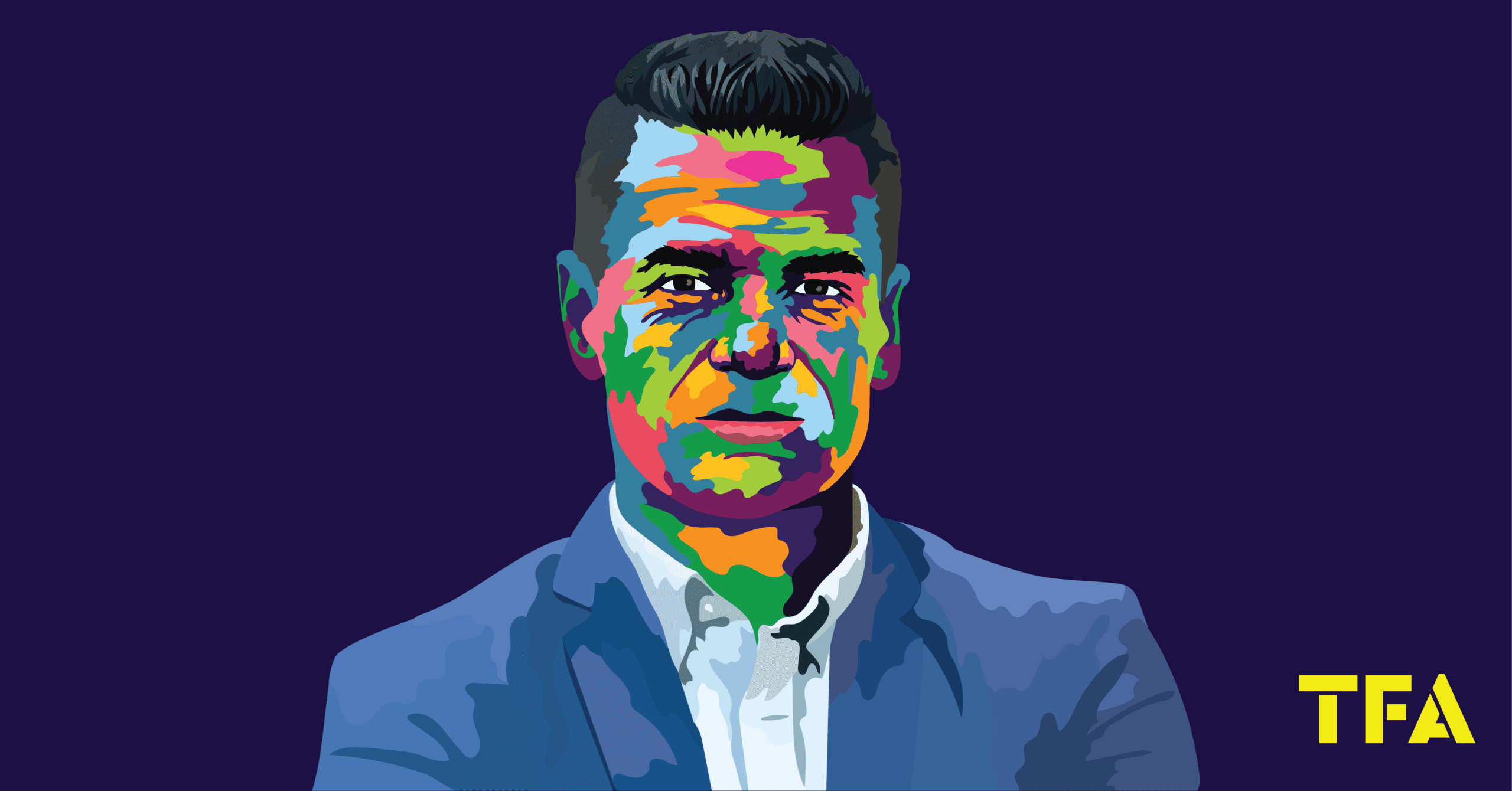



Comments